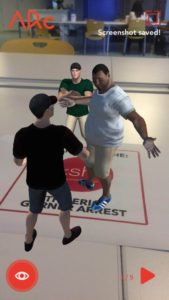Two years after Eric Garner’s death on July 17, 2014, the only person at the scene who has been indicted is Ramsey Orta, the man who filmed the police confrontation.
On July 7, 2016, Orta pleaded guilty to unrelated weapons and drug charges and will likely spend four years in jail. Since he released the cellphone video to the New York Daily News, he said he has been arrested and harassed by police multiple times. This highlights the continued significance of covering not only Garner’s case, but also other police shootings in the United States. The recent deaths of Alton Sterling in Louisiana and Philando Castile in Minnesota were shared largely through videos on Facebook. This footage not only fueled protests around the world, but can also be used as evidence to understand what really happened in the face of conflicting testimonies. It is only in the era of cellphones and viral sharing that citizen journalism can provide a gap in coverage.

Conversely, it is also more important than ever that individuals have the right to record the events happening around them. Abdullah Muflahi, the owner of the convenience store outside of which Sterling was killed, is suing the Baton Rouge police for taking the surveillance video of the shooting. Muflahi recorded the incident on his phone and said police seized his store’s security system without a warrant and illegally detained him.
Empathetic Media is dedicated to encouraging accurate media coverage of police shootings and other important stories around the world. Recently, we partnered with social venture project Silicon Harlem, which works to promote technological innovation in the borough. The augmented reality collaboration, entitled “I Can’t Breath: The Eric Garner Arrest,” is hosted on Empathetic Media’s free app, ARc Stories, the first augmented reality (AR) sequential storytelling app. We used Orta’s video to create 3D models of Garner and the officers involved. The experience walks the user through the events leading to Garner’s death with audio, maps and text providing additional details. We are only able to create these immersive augmented reality and virtual reality experiences with the existing video, photos and other evidence.
You can learn more about the piece and how to download it here:

